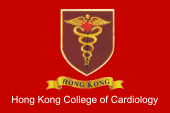Abstract
The British guidelines on the management of primary hypertension, developed by the National Institute for Clinical Excellence (NICE), have just been published in August 2011. There are several significant changes in the diagnosis and the treatment for primary hypertension in adults. Ambulatory blood pressure measurement should be regarded as the new gold standard in the diagnosis. Home blood pressure monitoring is also useful for the diagnosis and monitoring of hypertension. Because of the results of the Anglo-Scandinavian Cardiac Outcomes Trial study, calcium channel blockers (CCB) and blockers of the renin-angiotensin system have surpassed diuretics and beta-blockers as first line options. Patients younger than 55 should receive an ACE inhibitor, or an angiotensin receptor blocker if the former is not tolerated. Older patients should be started on a CCB. A thiazide diuretic can be used as an adjunct to the first line treatment. Chorthalidone and indapamide are preferred as they showed favorable outcomes in large clinical trials. Treatment with these three drug classes should be sufficient in the majority of patients, but if triple therapy is still insufficient, referral to a hypertension specialist is recommended. Further diuretic therapy with spironolactone can be used as the fourth line treatment. Some aspects of the new guideline are controversial, such as the practical difficulties of using ambulatory blood pressure monitoring in family practice, and the arbitrary blood pressure cutoff levels. Many doctors also believe that control of blood pressure is best achieved using a wider range of drugs to suit the individual patient.
Recommended Citation
Tommy Tsang Cheung, Bernard Man- Yung Cheung, New NICE Guideline on the Treatment of Hypertension Journal of the Hong Kong College of Cardiology 2012;20(1) https://doi.org/10.55503/2790-6744.1049
Creative Commons License

This work is licensed under a Creative Commons Attribution-Noncommercial-No Derivative Works 4.0 License.

